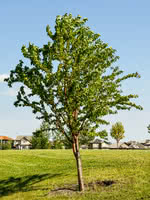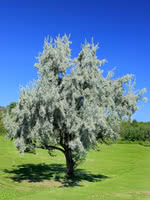Mon-Fri 9am - 5pm Mountain time
Russian Olive vs Amur Cherry
Prunus maackii
Elaeagnus angustifolia
NOT AVAILABLE THIS SEASON - MIGHT RETURN
Amur Cherry is a beautiful, fast-growing ornamental tree. It features attractive bronze/red bark that peels horizontally in strips.
This hardy tree bears white flowers in the spring, black fruit held in clusters in the late summer, and pointy leaves that turn yellow in the fall.
Russian Olive is a medium-sized deciduous tree that has attractive silvery coloured foliage with small yellow flowers that emit a fragrant sweet smell.
It is drought and salt tolerant, and works well as a shelterbelt species. Russian Olive can also be used to combat erosion.
Note: although Russian Olive is planted as an attractive boulevard tree in many northern areas, in warmer areas it can invade watersheds and is considered invasive. Please do some research and plant the right tree in the right place.
Amur Cherry Quick Facts
Russian Olive Quick Facts
Toxicity: toxic to horses, cattle, etc.)
In row spacing: 1.8 - 2.4 m (6 - 8 ft)

